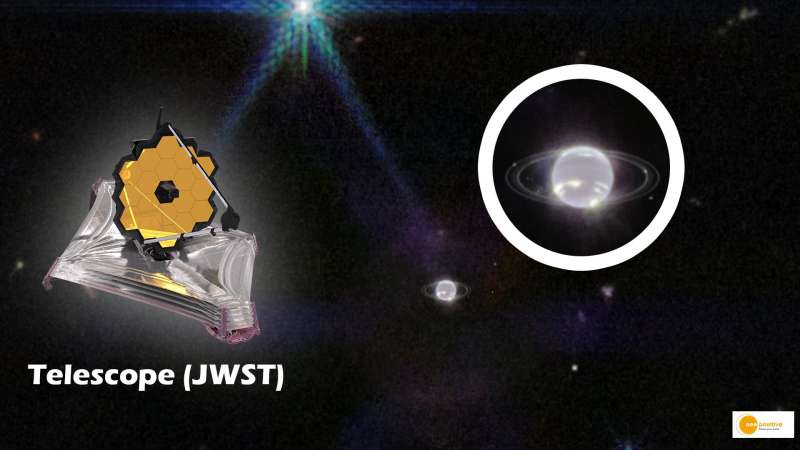

NASA’s James Webb Space Telescope (JWST) is one of the largest and most advanced telescopes of NASA. It has taken spectacular pictures of the icy planet Neptune.
According to NASA, the James Webb Space Telescope has taken pictures of Neptune for the first time. Earlier in 1989, i.e. 33 years ago, Voyager 2 Probe took such pictures of Neptune. In these pictures, the rings of this icy planet are clearly visible and shining. So far, only the blue picture of the planet Neptune has been coming out. In such a situation, more things can be known about this planet from the new pictures.
This information has been given in the press release issued by NASA. Neptune expert Heidi Hamel said, ‘This is the first time in three decades that we have seen these new, dusty rings, and the first time that this planet has been seen.’
In addition to the many thin rings, the new images also show light dusty bands of Neptune. Prior to this, in 1989, Voyager 2 took a photo of Neptune. The Voyager 2 probe did see a faint circle of light around the planet Neptune, but the pictures were blurry.
Facts about Neptune
For your information, let us tell you that Neptune is the farthest planet in our solar system. Earlier there was Pluto, but now it is not counted among the planets. The distance of Neptune from Earth is 432 million kilometers. Neptune is also known as the ‘Ice Demon’, surrounded by cold, dark and supersonic winds. This planet is tilted towards the
Earth and it takes 164 years to complete one revolution of the Sun. Geologists have not yet found any photographs or any information about its north pole.
According to Heidi Hamel, for the first time we are able to clearly see the faint bands present around Neptune. These rings are not visible in the normal picture, so the help of infra red pictures of James Webb Space Telescope was taken.
There is a lot of methane on Neptune, so it usually looks like a blue dot. James Webb’s Infra Red Camera (NIRCam) has shown the rings around it in white. James Webb has also photographed seven of Neptune’s 14 known moons, including its brightest moon Triton.
Talking about James Webb, it has been only eight months since he went to space. But he has introduced the world to a new world of space. Earlier in August, it had captivated everyone by taking colorful pictures of Jupiter’s Great Red Spot and Aurora (polar light).


